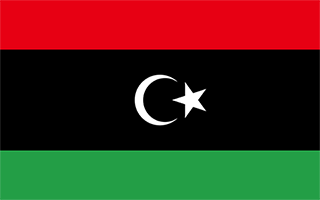Facts and Data
Webpages:
Official Unesco Page
Lepcis Magna Excavation Site
Basis Data:
Unesco World heritage since: 1982
Size of heritage:
Coordinates:
Longitude: 14,293°
Latitude: 32,638°
Summary
Leptis Magna was enlarged and embellished by Septimius Severus, who was born there and later became emperor. It was one of the most beautiful cities of the Roman Empire, with its imposing public monuments, harbour, market-place, storehouses, shops and residential districts.
Location on Map
Show bigger map on Openstreetmap
Archaeological Site of Leptis Magna
The Archaeological Site of Leptis Magna is a UNESCO World Heritage site located in the District of Khoms, Libya. It is one of the most well-preserved and impressive Roman cities in the Mediterranean region. The site is renowned for its exceptional architectural and artistic features, which provide valuable insights into the Roman Empire's grandeur and influence in North Africa.
History
Leptis Magna was originally founded as a Phoenician trading post in the 7th century BC. It later became a prominent city under the rule of the Carthaginians and then the Romans. The city flourished during the reign of Emperor Septimius Severus, who was born in Leptis Magna and later became one of Rome's most influential emperors.
Under Severus' patronage, Leptis Magna experienced a period of significant growth and development. The city became a major center for trade, commerce, and culture, boasting impressive public buildings, temples, theaters, and baths. The architectural style of Leptis Magna was heavily influenced by Roman and Hellenistic traditions, resulting in a unique blend of architectural elements.
However, the decline of the Roman Empire and subsequent invasions by Vandals and Byzantines led to the abandonment and gradual deterioration of Leptis Magna. The city was eventually buried under layers of sand, preserving its ruins for centuries.
Current State
Today, the Archaeological Site of Leptis Magna stands as a testament to the grandeur of the Roman Empire. The site covers an area of approximately 120 hectares and includes numerous well-preserved structures and monuments.
One of the most iconic features of Leptis Magna is the Arch of Septimius Severus, a triumphal arch built to commemorate the emperor's victories. The arch is adorned with intricate carvings and inscriptions, showcasing the exceptional craftsmanship of the time.
The Severan Basilica is another remarkable structure within the site. This massive building served as a courthouse and public meeting place, featuring a central nave flanked by two aisles and a stunning colonnaded courtyard.
The Amphitheater of Leptis Magna is one of the largest in the Roman world, capable of accommodating up to 16,000 spectators. Its well-preserved seating tiers and underground chambers provide a glimpse into the grandeur of ancient Roman entertainment.
Other notable structures include the Hadrianic Baths, the Market Basilica, and the Circus Maximus. Each of these buildings showcases the architectural prowess and cultural significance of Leptis Magna during its prime.
Despite its historical and cultural significance, the Archaeological Site of Leptis Magna has faced challenges in recent years due to political instability and conflict in Libya. The site has suffered from looting, vandalism, and neglect, threatening its preservation and future. However, efforts are being made to protect and restore this invaluable heritage site, ensuring its legacy for future generations.
The Archaeological Site of Leptis Magna stands as a testament to the power and influence of the Roman Empire in North Africa. Its exceptional architectural and artistic features provide a glimpse into the grandeur of ancient civilizations, making it a site of immense historical and cultural value.
Videos from the area
Videos provided by Youtube are under the copyright of their owners.




